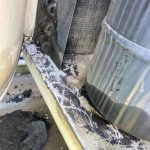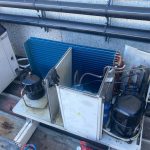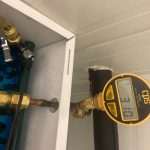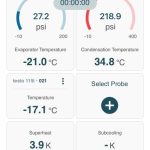Commercial Refrigeration Gas Leaks
The service team at MNK recently had a situation where a client’s commercial freezer room in Melbourne was losing refrigerant every few months and affecting the operating temperature.
We tried the conventional methods of detecting the source of the leak, such as electronic leak detectors to “sniff” for refrigerant in the air, UV dye additive to the system and examination with a UV light – still the exact site of the leak eluded us.
We suspected the leak may be in the evaporator coil but we could not get a definite and sustained indication of the site of the leak, the unit was only losing refrigerant every few months, so the leak was obviously very small.In the past, this type of scenario might have been left to continue, causing inconvenience to the end user every few months, unnecessary cost and unnecessary emissions of refrigerant into the environment. Today’s refrigeration specialist needs to adhere to methods and practises that reflect consideration to the environment and adhere to the requirements of our refrigerant handling accreditation.
In a concerted effort to address our client’s dilemma, MNK went out and invested in the latest technology in leak detection, utilising trace gas to pressure test refrigeration systems.
Trace gas is a mixture of Hydrogen and Nitrogen, Hydrogen is the lightest and smallest molecule in the atmosphere and will readily exit the system at any leak point.
Leak detection units suitable for H2 and Hydrocarbon detection are required for trace gas, or the trusty soapy water solution.
We found the source of our leak and several other leaks using the trace gas method, now allowing us to give our client accurate, informed, and definitive options for repair of his system with the confidence that we have identified the leak source rather than just operating on a “best guess”
MNK are commercial refrigeration specialists for Melbourne, with close to 35 years in the industry.













